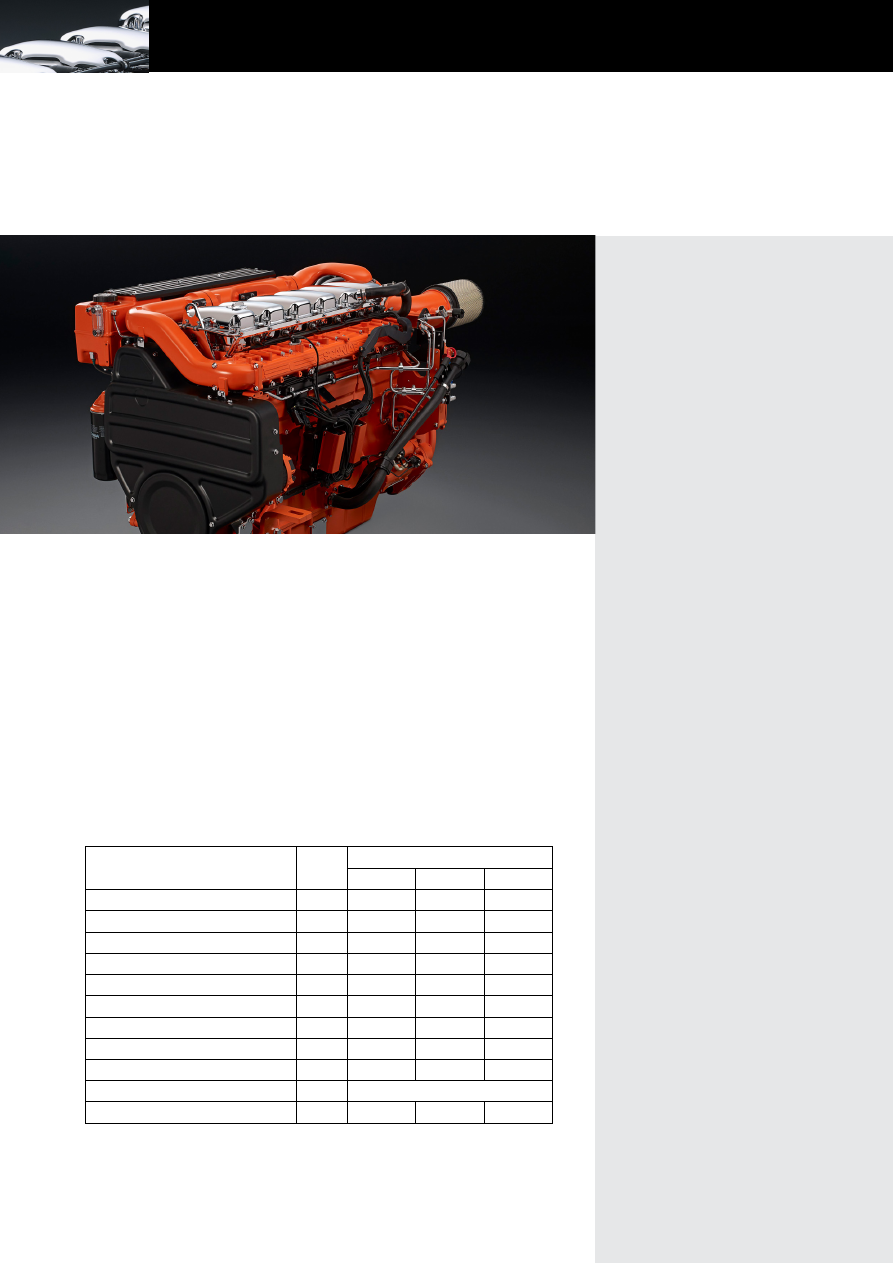SCANIA MARINE ENGINES (specification) - part 2

Standard equipment
• Scania Engine Management System, EMS
• Unit injectors, PDE
• Turbocharger
• Fuel pre-filter with water separator
• Fuel filter
• Oil filter, full flow
• Centrifugal oil cleaner
• Oil cooler, integrated in block
• Oil filler, in engine block
• Oil dipstick, in block
• Starter, 2-pole 7.0 kW
• Alternator, 2-pole 100A
• Flywheel SAE 14
• Silumin flywheel housing, SAE 1 flange
• Front-mounted engine brackets
• Protection covers
• Sea water pump
• Heat exchanger with expansion tank
• Closed crankcase ventilation
• Operator’s manual
Optional equipment
• Hydraulic pump
• Side-mounted PTO
• Front-mounted PTO
• Exhaust connections
• Electrical base system
• Control and instrument panels
• Accelerator position sensor
• Engine heater
• Power pack engine bracket
• Stiff rubber suspension
• Air cleaner
• Studs in flywheel housing
• Reversible fuel filter
• Low coolant level reaction
• Variable idle speed setting
• Low and extra low oil sump
• Long oil dipstick
• Oil level sensor
• Bilge pump
SCANIA MARINE ENgINEs
DI13 070M. 331 kW (450 hp)
IMO Tier II, Us Tier 2, EU stage IIIA
The marine engines from Scania are based on a robust design with a strength
optimised cylinder block containing wet cylinder liners that can easily be exchanged.
Individual cylinder heads with 4 valves per cylinder promotes repairability and fuel
economy. The engines are type approved in all major classification societies.
The engine is equipped with a Scania developed Engine Management System,
EMS, in order to ensure the control of all aspects related to engine performance.
The injection system is based on electronically controlled unit injectors that gives low
exhaust emissions with good fuel economy and a high torque already at low revs.
The engine can be fitted with many accessories such as air cleaners, PTOs, transmis-
sions and type approved instrumentation in order to suit a variety of installations.
This specification may be revised without notice.
Engine speed (rpm)
Rating
1200
1500
1800
Gross power, full load (kW)
ICFN
262
315
331
Gross power, full load (hp, metric)
ICFN
356
428
450
Gross power, propeller curve (kW)
ICFN
120
210
331
Gross power, propeller curve (hp, metric)
ICFN
163
285
450
Gross torque (Nm)
ICFN
2085
2003
1756
Spec fuel consumption. Full load (g/kWh)
192
191
202
Spec fuel consumption. 3/4 load (g/kWh)
194
200
212
Spec fuel consumption. 1/2 load (g/kWh)
199
203
217
Spec fuel consumption. Propeller curve (l/h)
29
50
79
Optimum fuel consumption (g/kWh)
190
Heat rejection to coolant (kW)
174
205
242
ICFN – Continuous service: Rated power available 1 h/1 h.
Unlimited h/year service time at a load factor of 100%